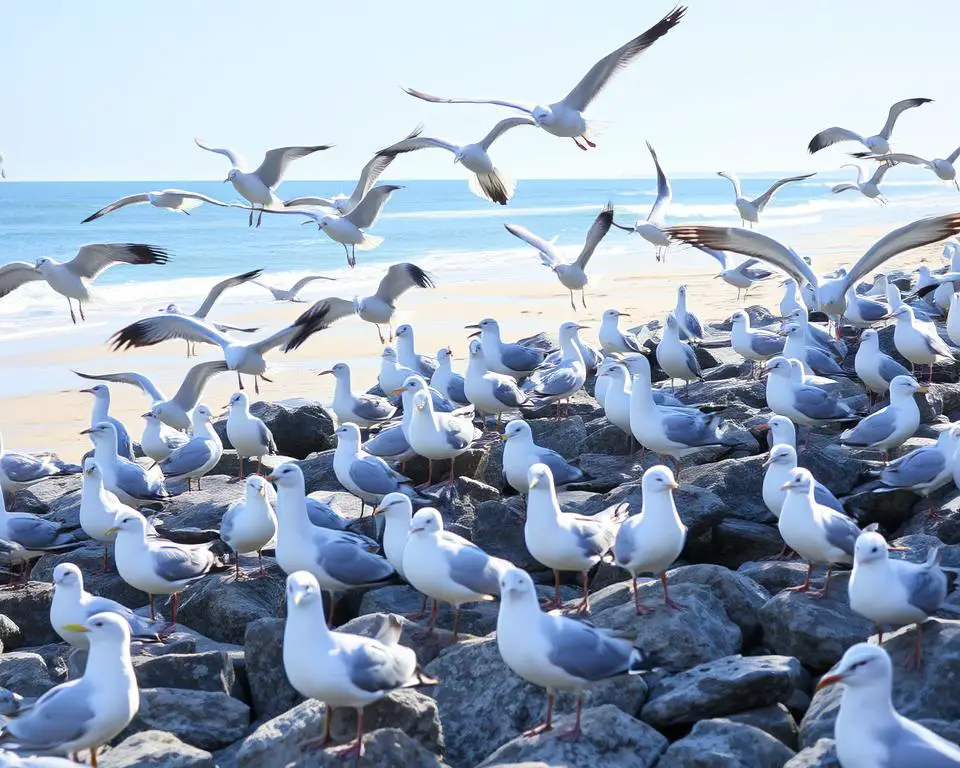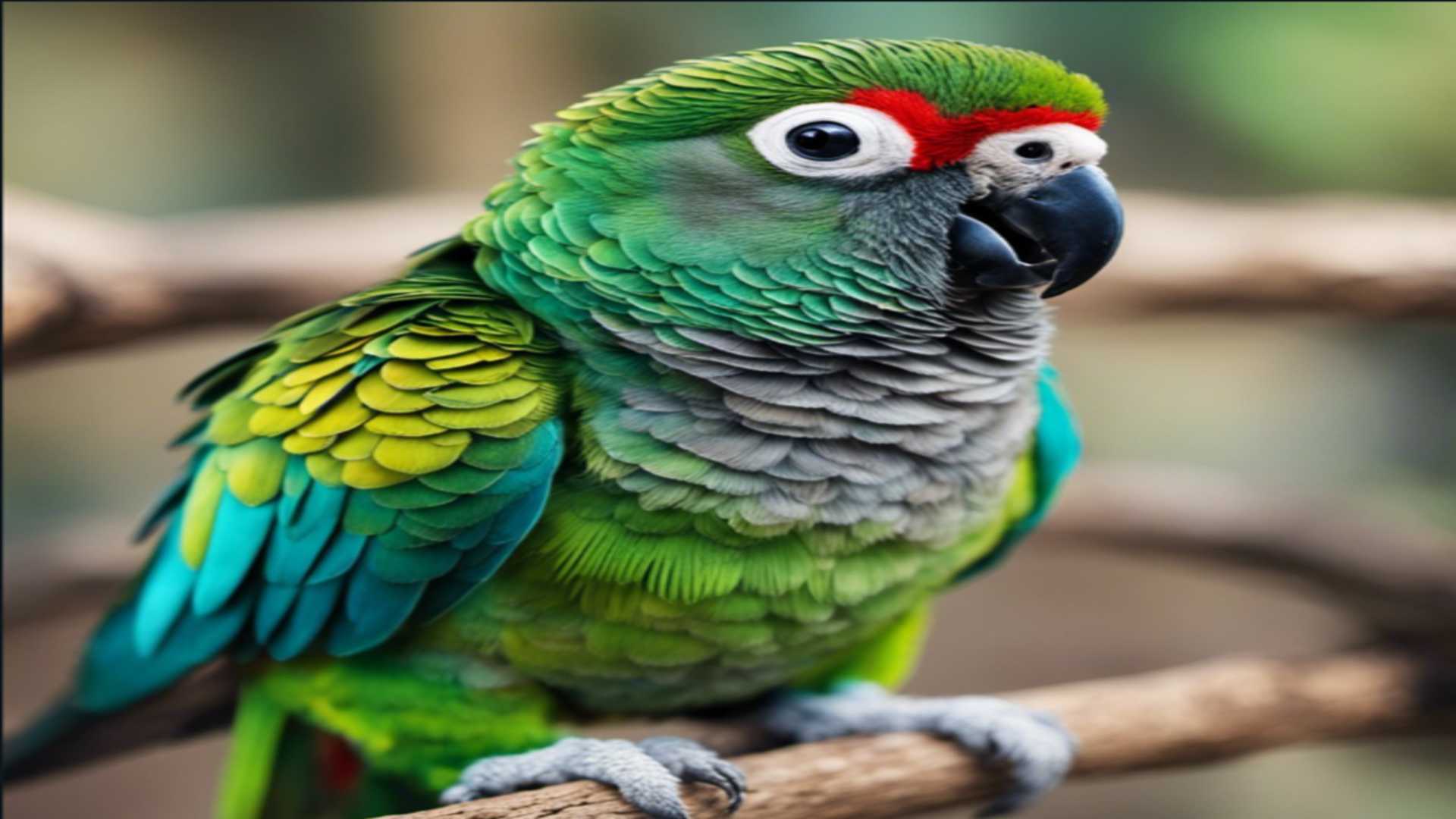Everyone has heard stories of seagulls attacking humans. But are they true or just an exaggeration? Do seagulls attack humans?
While they can be aggressive and have been known to attack humans and pets, their attacks are usually limited to stealing food or defending their nests during the breeding season, which lasts, on average, 27 days.
They can cause serious injury if they attack due to their sharp beaks and claws, which can cause cuts and bruises.
It’s important for us to better understand this behavior so we can stay safe near breeding sites. In this article, we’ll explain more about why seagulls may attack humans and what you can do if it happens to you.
Let’s get started.
Do seagulls attack humans?
Seagulls can indeed attack humans, although such incidents are not extremely common.
These attacks are usually a result of the birds feeling threatened, especially during the nesting season when they are protecting their chicks, or when they are attempting to steal food.
Seagulls have become accustomed to humans as a source of food due to intentional feeding and the availability of food waste, which has led to a decrease in their natural fear of humans.
Seagulls can cause injuries through contact with their wings, claws, and bills, which have been known to result in cuts, bruises, and even broken bones or fractures.
They are also known to swoop down on pets, and there have been reports of seagulls attacking small dogs.
To protect yourself from seagull attacks, it is recommended to avoid getting too close to their nests, to move away if you hear their warning calls, and to keep food close to you and out of sight to avoid attracting them.
If you find yourself in the midst of a seagull attack, you should raise your arms to protect your head and aim to get away quickly while remaining calm. It’s also important to dispose of rubbish properly to avoid attracting seagulls.
What makes seagulls so dangerous?
Seagulls are a common sight in many countries around the world, with some species having a wingspan of 140cm and weighing up to 2kg.
They can travel at speeds of up to 35mph, making them difficult to spot before an attack. Seagulls have been known to attack humans and pets, often stealing food from beach-goers.
Accurate pest control management can provide proofing methods to keep seagulls away from properties. However, many people enjoy feeding seagulls along the coast, worsening the problem.
Hunger
One of the main reasons why seagulls attack humans is due to hunger. Seagulls depend on small fish, insects, and other small animals to feed their young, so when those resources become scarce or are not available in certain geographical areas, seagulls turn to other food sources for sustenance.
Unfortunately for humans, this means that they sometimes take things from public areas or even snatch a bite from people’s hands in order to get the food that they need.
These attacks are most common in urban areas where there is always plenty of food around.
That said, gulls are known for their scavenging habits, often flocking together to feed on whatever they can find. With an average daily food consumption of 20% of their body weight, seagulls can quickly become aggressive if they feel threatened or if their food source is taken away.
Numbers
Nesting season means higher levels of aggression from both male and female birds, and they’ll swoop down on anyone who gets too close to protect their nest.
The numbers are even more concerning in cities than in rural areas, where more people spend time outdoors.
Seagulls are one of the most common birds in cities, with up to eight species regularly seen there, according to leading bird specialist organizations like The Royal Society for the Protection of Birds (RSPB).
This means that any human living near the coast is likely to be targeted at some point if they go outside during peak nesting periods, usually March through May.
Additionally, seagull populations are continuing to grow increasingly larger due to habitats created for them by unnatural population increases, thriving landfill sites, and an abundance of food sources like rubbish and fast-food outlets.
Nesting
Nesting gulls can be a nuisance during the breeding season, which typically runs from March until May. During this time, it is important to be aware of their presence and listen for a low-pitched, squawking sound as a warning of an attack.
To protect yourself further, you can lift up your arms to shield your head, as seagulls tend to target the head and face area.
Seagull chicks take about 5-6 weeks to leave the nest, so this behavior won’t last forever. In the meantime, it is important to remain vigilant and take precautions if you walk near these areas.
Why aren’t seagulls afraid of humans?
Seagulls have become accustomed to being around humans due to people often feeding them, which has caused them to lose their natural fear of humans. Seagulls are a common bird in many countries in the world.
Unfortunately, this lack of fear can be dangerous as seagulls have been known to attack humans and pets, often stealing food from beach-goers.
What to do if a seagull approaches you?
If a seagull approaches you, the best thing to do is stay calm and slowly walk away. Don’t make sudden movements or swat at them, as this will only encourage them to continue their attack. You should also avoid coming too close to baby birds or their nests.
How do you stop seagulls swooping at you?
We all wish seagulls would keep their distance when it comes to us humans. It’s important to make sure you remove the food source that attracts them. If possible, avoid feeding them in any way.
That said, you can also take steps to minimize the risk of a seagull attack.
- Avoid standing near their nests, and make sure your outdoor picnic area is clean and free of any crumbs or scraps of food that might entice them over for dinner.
- Wear a hat or carry an umbrella with you when outdoors, as this may help deter swooping behavior as well.
If a seagull does come close enough to pose a threat, then try shooing it away using large hand gestures such as clapping or waving your hands in its direction while shouting loudly if necessary.
Note: Recent studies have confirmed that bright colors are more likely to drive seagulls’ attention toward those colors, such as green, blue, and red. It is important to keep this in mind when you are near a seagull nesting area.
Summary
Before we move on to the conclusion, we’ve summarized this article into a short list of key points for you to remember:
- Over time seagulls have lost the fear of humans due to people often feeding them.
- If a seagull attacks you, ensure to cover your face and head, stay calm, and slowly walk away.
- To stop seagulls from swooping at you, make sure you remove the food source that attracts them and avoids standing near their nests.
Conclusion
Seagulls are not typically a threat to humans; It’s very important to remember never to feed gulls, as doing so may make them more aggressive and less afraid of humans, leading to potential attacks.
Want to learn more about seagulls?
Ready to boost your knowledge to the next level? If so, check out the articles below:
- Can Seagulls Drink Salt Water? (3 Minutes Read)
- Can Seagulls Eat Bread? (Explained)
- How Do Seagulls Know When You Have Food?(Explained)





